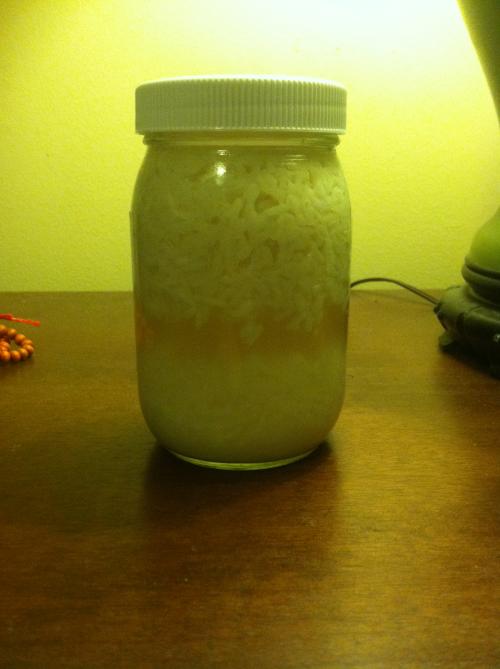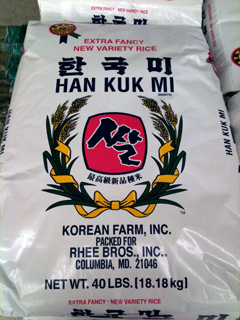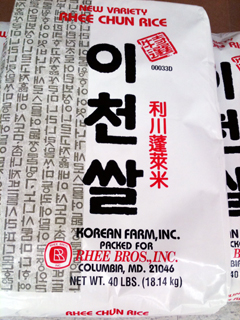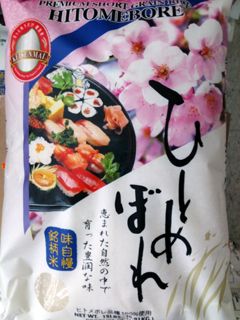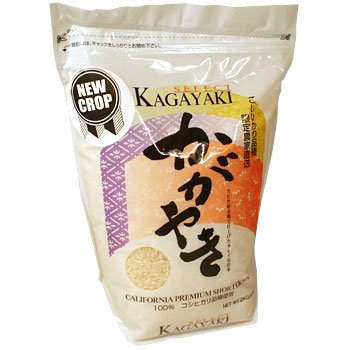Sorry about the lameness of two very similar posts in quick succession. I posted one, but a few hours later it didn't show up, so I redid it - only to notice after hitting the post button or whatever it's called I was directed to a message for just a second or two saying that it wouldn't be posted until reviewed and approved by a moderator/admin whatever they're called here. Anyway, yeah, I have a few pictures of the jarred product.
Looking good, no? I think probably it will be okay. It sure smells like wine.
Fun fact: as we all have noticed with the wine cakes, sometimes items made for a Chinese speaking demographic are not exactly translated properly on the packaging. They may not be
wrong as descriptions of the product, but they aren't translations of the Chinese on the packaging and sometimes might not tell the whole story, as it were.
So, fun fact: the term "fermented sweet rice sauce" isn't wrong, because that's one way of describing what is in the jar. However, the first character 甜 means "sweet," the second 酒 obviously means wine/alcohol, and the third 酿 (exceptions made for difference between traditional and simplified characters) means "ferment."
In fairness, 酒酿 itself refers to fermented glutinous rice; to use 酿 as the verb to make wine it would be 酿酒。 As a learner I notice some things like this that are confusing, for instance 犯罪 is to commit a crime, 罪犯 is a criminal. So, really, I guess if we're treating 酒酿 as one word rather than two, it IS a fair translation. Except, one of the more reliable online resources for a Chinese-English dictionary and translator of short phrases and sentences does translate 甜酒酿 all together as Chinese Rice Wine. But it's an example of one of their misses, I think, because an image search of the same term on their site brings up the food, not the wine. Still, I think it's interesting that at least one name for this food is "sweet wine ferment." Lets you know what it's capable of, I guess.

Anyway, on this jar I think the liquid level is a little beneath the shoulder. Since I have no idea how long this fermentation has been going, and since I'm not really a brewer or a drinker (I got interested in this more because I know little about Chinese alcohol and wanted to learn how this differs from sake, which I used to drink a lot when I was younger and drank often) I don't properly know how to tell when to "harvest" it. I have finally worked through the whole thread, though I skimmed some large portions, and I can see everyone has gotten different results. Some people are saying their batches sometimes finish up with a lot of rice still looking pretty in tact but the wine being robust and complete, other times the rice almost entirely disintegrates as I gather. Maybe this would, maybe it wouldn't. No reason to sweat it as far as I'm concerned though.





